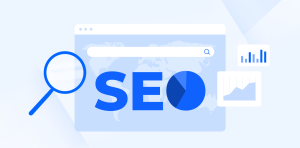7 Essentials of A Website That Works for Your Business

It’s 2019. You already know you need a website. But sometimes it’s easy to overlook the elements that you need to include in a website that actually work for your business. It’s not enough to simply have a basic website for the sake of having a website. You need something that will help you meet your business goals and grow your bottom line.
Here are 7 essentials of a website that works for your business. These areas should never be overlooked, and will all contribute to an effective website that makes sure you reach and meet your goals.
#1. Clear Goals and Strategic Vision
No matter what business you operate, you need to start by asking yourself what you want your website to do for you. Website development needs to be done with your business goals in mind. These goals shape everything about your website, from the way it’s designed to the layout, the CMS system, and the content you post. Goals are also an essential component of your digital marketing strategy. Without them, you’re not making your budget work in a growth-oriented way.
#2. Strategic Yet Attractive Design
Of course, one of the elements you need to consider is your website’s design. This is the first impression you’re going to make on your visitors, and it needs to be something that stands out from your competitors. It takes approximately 0.05 seconds (50 milliseconds) for a user to form an opinion about your website, and that opinion determines whether they leave or stay. That means you have 0.05 seconds for your design to impress someone. It has to be good.
An effective website design should always include the following:
- Eye-catching visuals
- Brand consistency
- Your message or a clear idea of what your company is all about
- Call to action buttons
- Easy to find contact information
#3. Seamless User Experience
If your website isn’t easy to navigate, people will leave. It’s as simple as that. You could have the prettiest website on the Internet, but if it’s not easy to use, that design doesn’t matter. And when people leave, you lose out on potential conversions. Make sure that your site is easy to use. This means taking actions such as avoiding loading up your pages with content that will slow down the load time, implementing clear and concise menus, and incorporating a simple yet eye-catching design. It sounds like a lot, but if you work with a good web developer, they’ll know what to do to make sure your site covers all the bases.
#4. Valuable Content
As they say in the digital marketing industry, content is king. You may hear this a lot, but it’s absolutely true. 60% of online consumers say that they feel better about a brand after they consume its content. Good content engages your visitors, keeps them on the page, and establishes your authority and credibility in your particular industry. Content is also important for your SEO strategy. The more content you have, the more you can optimize keywords, include on-page tags and relevant links, and expand your value to your audience.
#5. Mobile Responsiveness
This is another concept you’ve probably already heard about. Your website needs to be optimized for mobile. In today’s day and age, the majority of people own a smartphone, and more than half of your website traffic will come from mobile users. Make sure your website is optimized for mobile so that your mobile audience has a good user experience that makes them want to continue returning. Additionally, Google gives preference to websites that are mobile responsive, so if you want your SEO strategy to be as strong as possible, make sure you don’t overlook your mobile users.
#6. Clear Calls to Action
Any good digital marketing strategy makes effective use of calls to action, whether you’re building a landing page or developing premium content. Calls to action tell your audience what they should do next and guide them down the marketing funnel. They are a way to motivate users on your site to become converted customers. In fact, talk to any marketing expert and they’ll likely tell you that a call to action is the most important part of your on-page strategy. Make sure you’re using them properly.
#7. Tracking and Measuring Tools
There’s no use in incorporating all of these elements if you’re not going to be monitoring and tracking your analytics. Be sure to make sure you integrate programs such as Google Analytics onto your site so you can determine where your website is working, and which areas need improvement. With these tools, you can track metrics such as where your traffic comes from, which pages audiences are engaging with, and which strategies are working. The more you monitor and implement changes, the better your business will grow.






